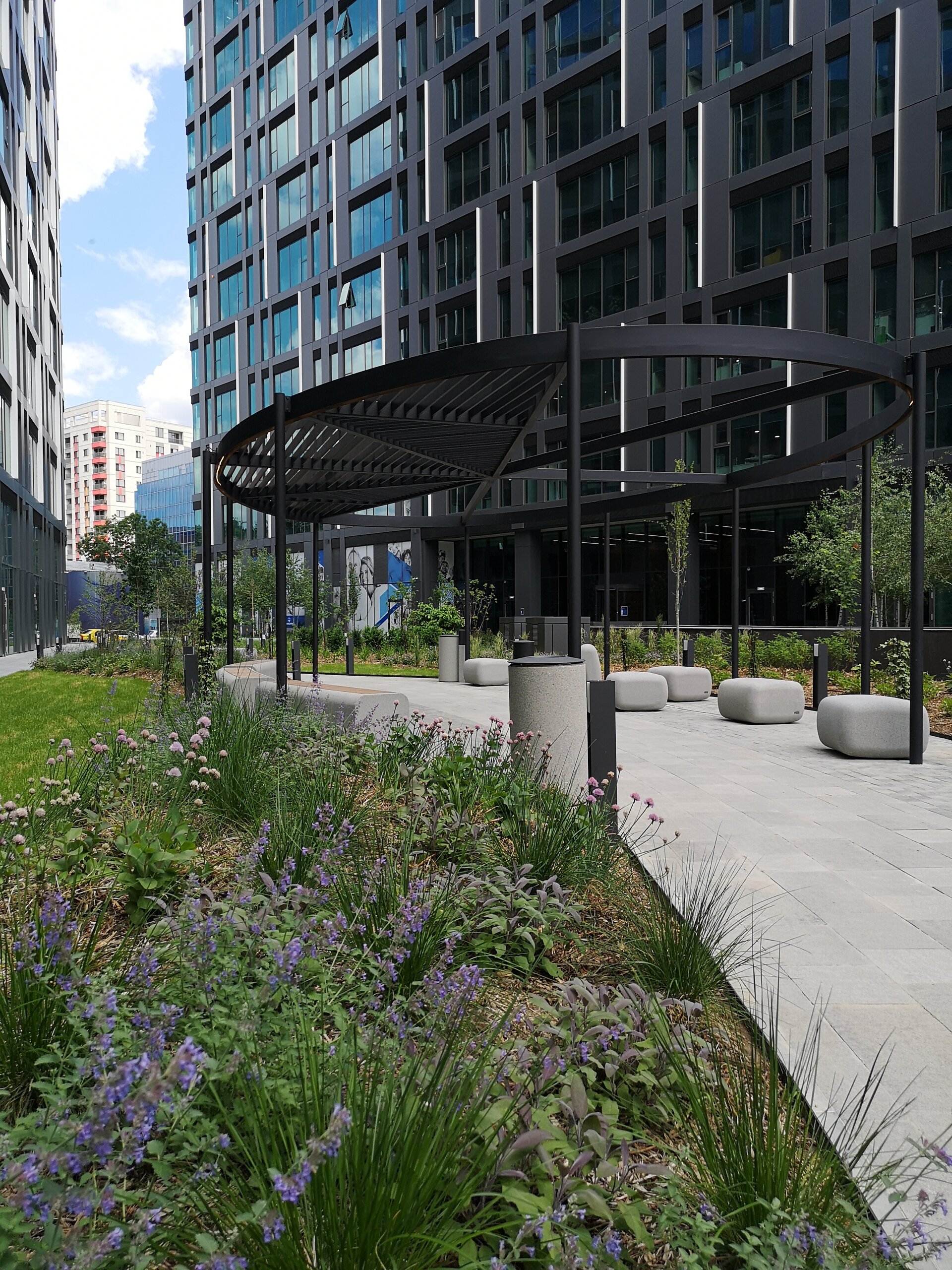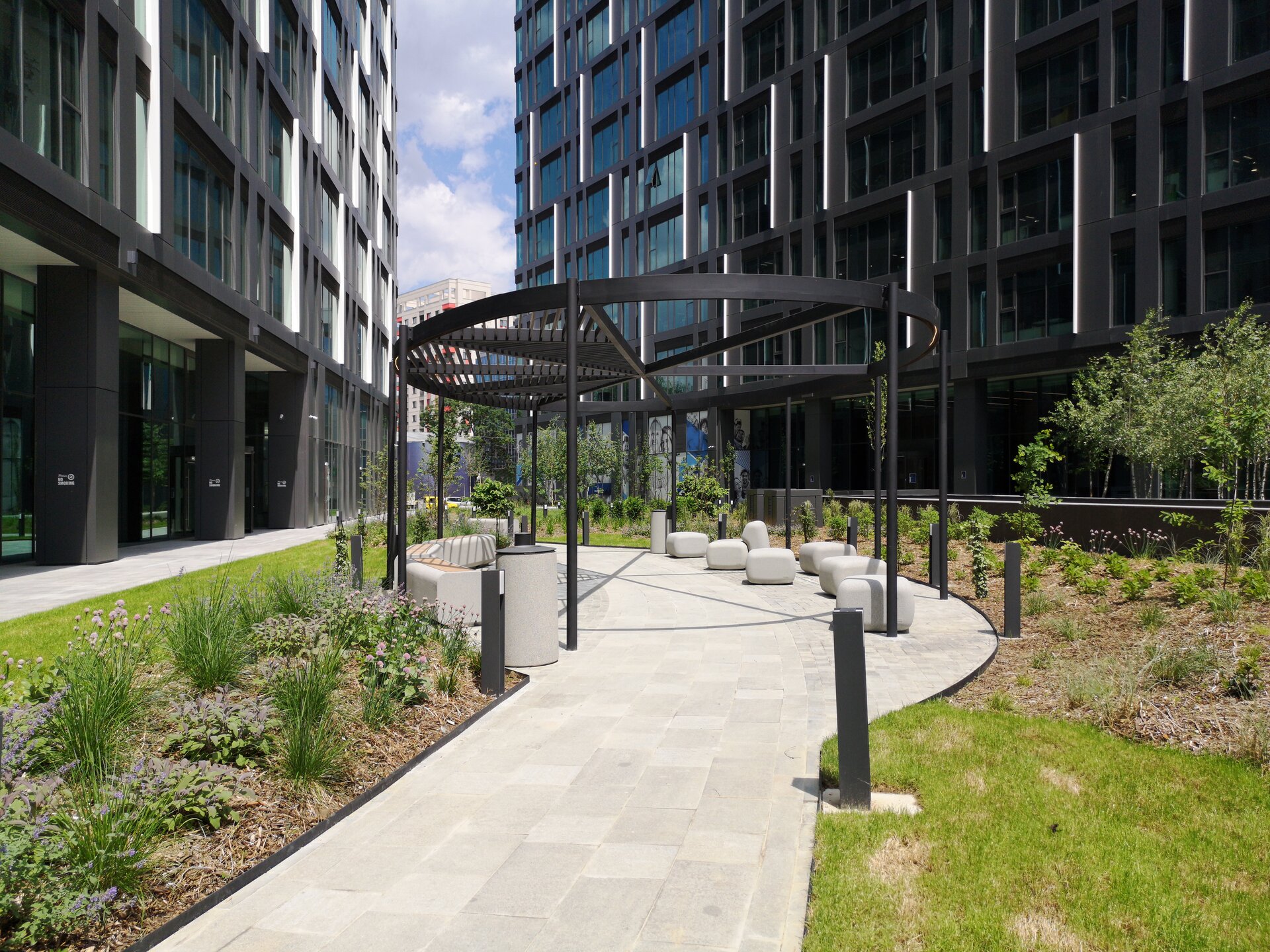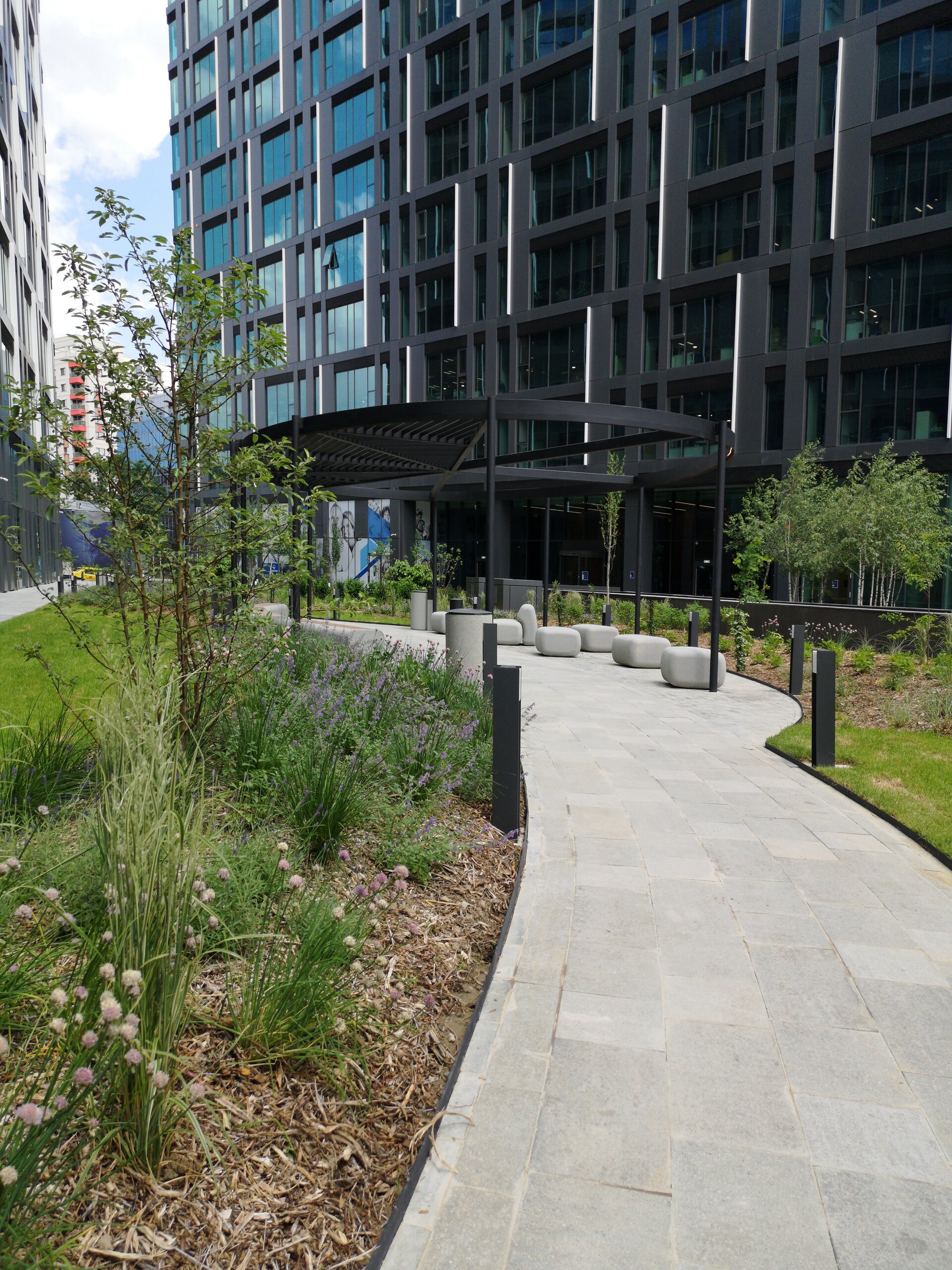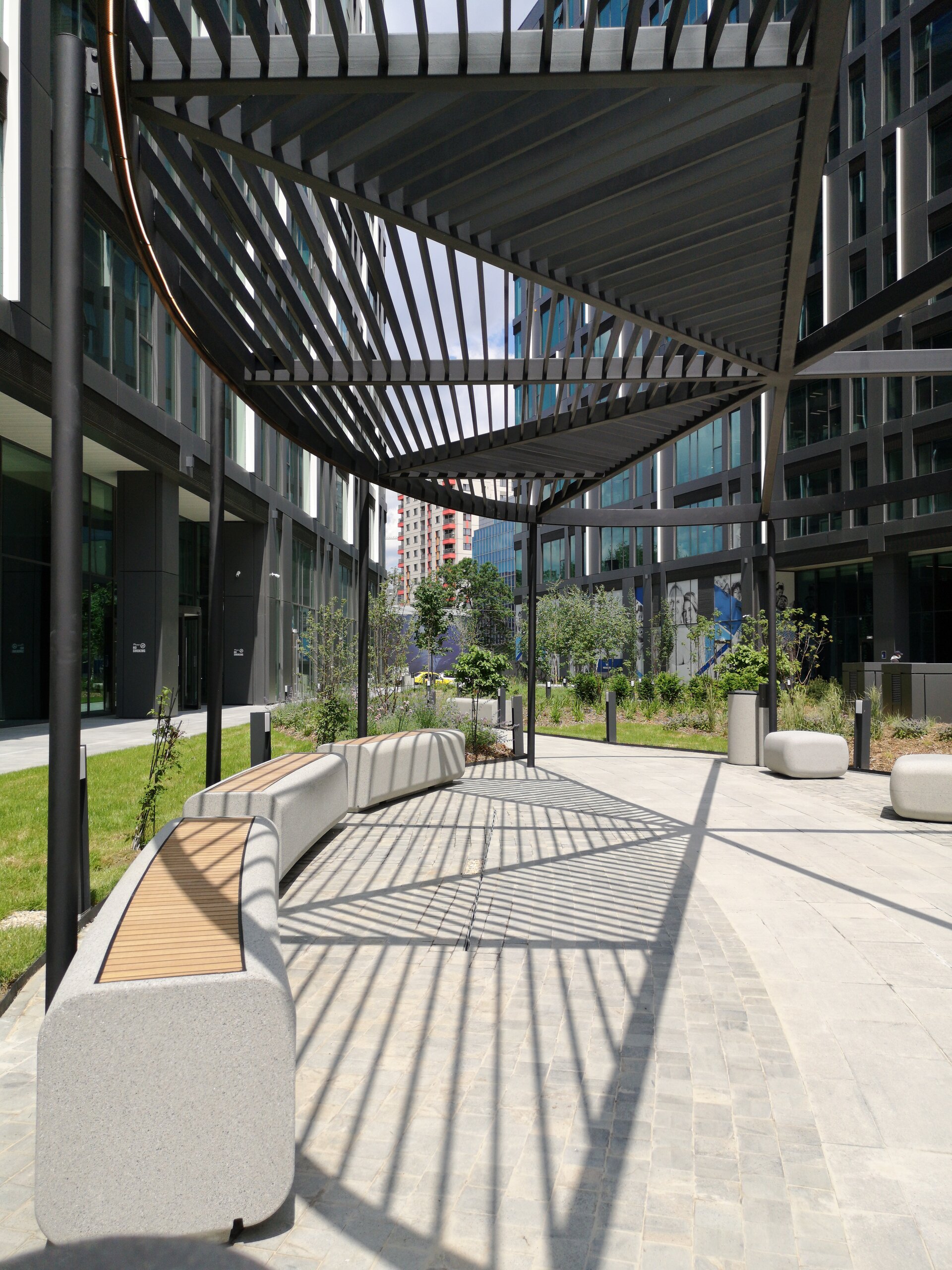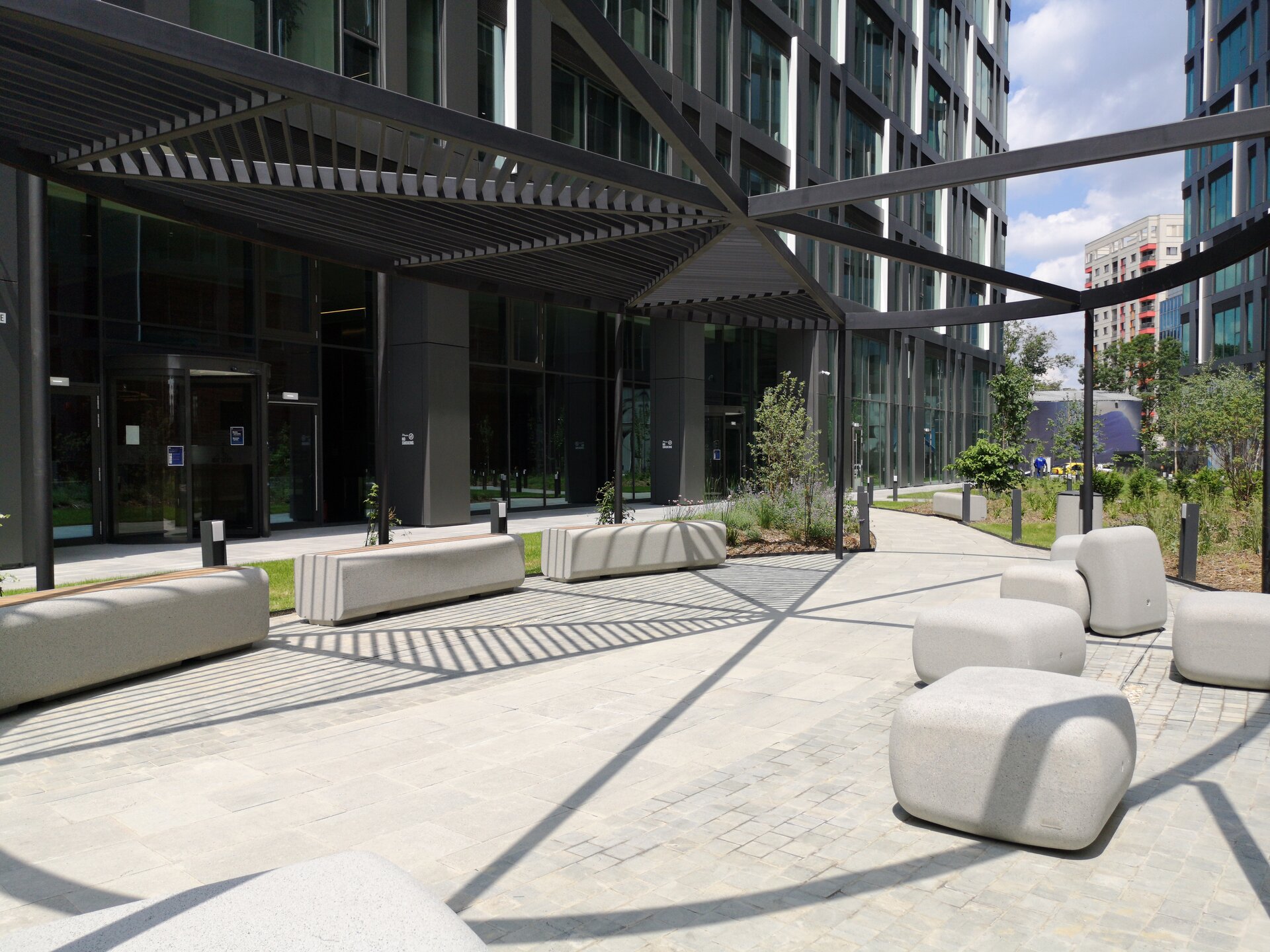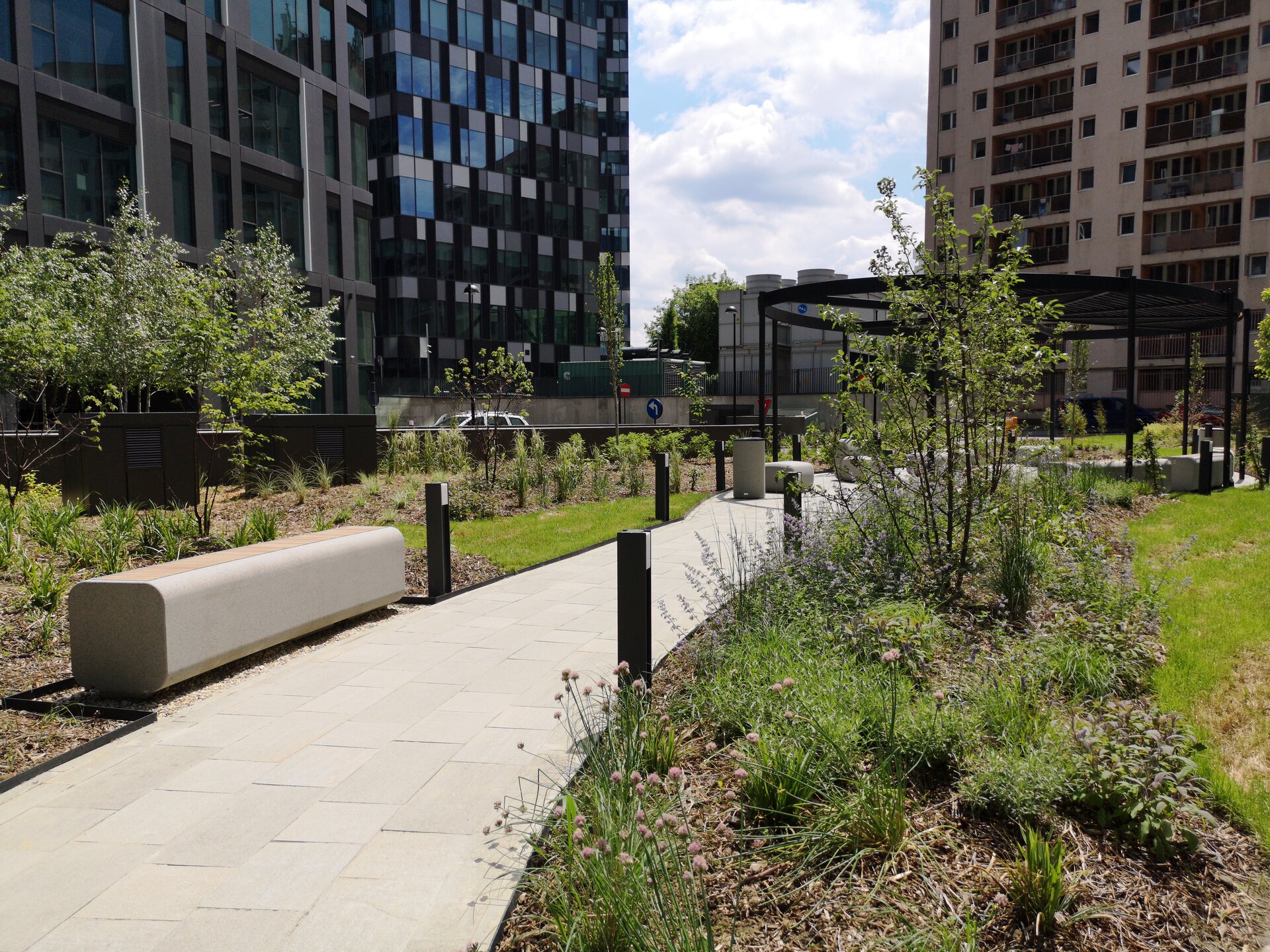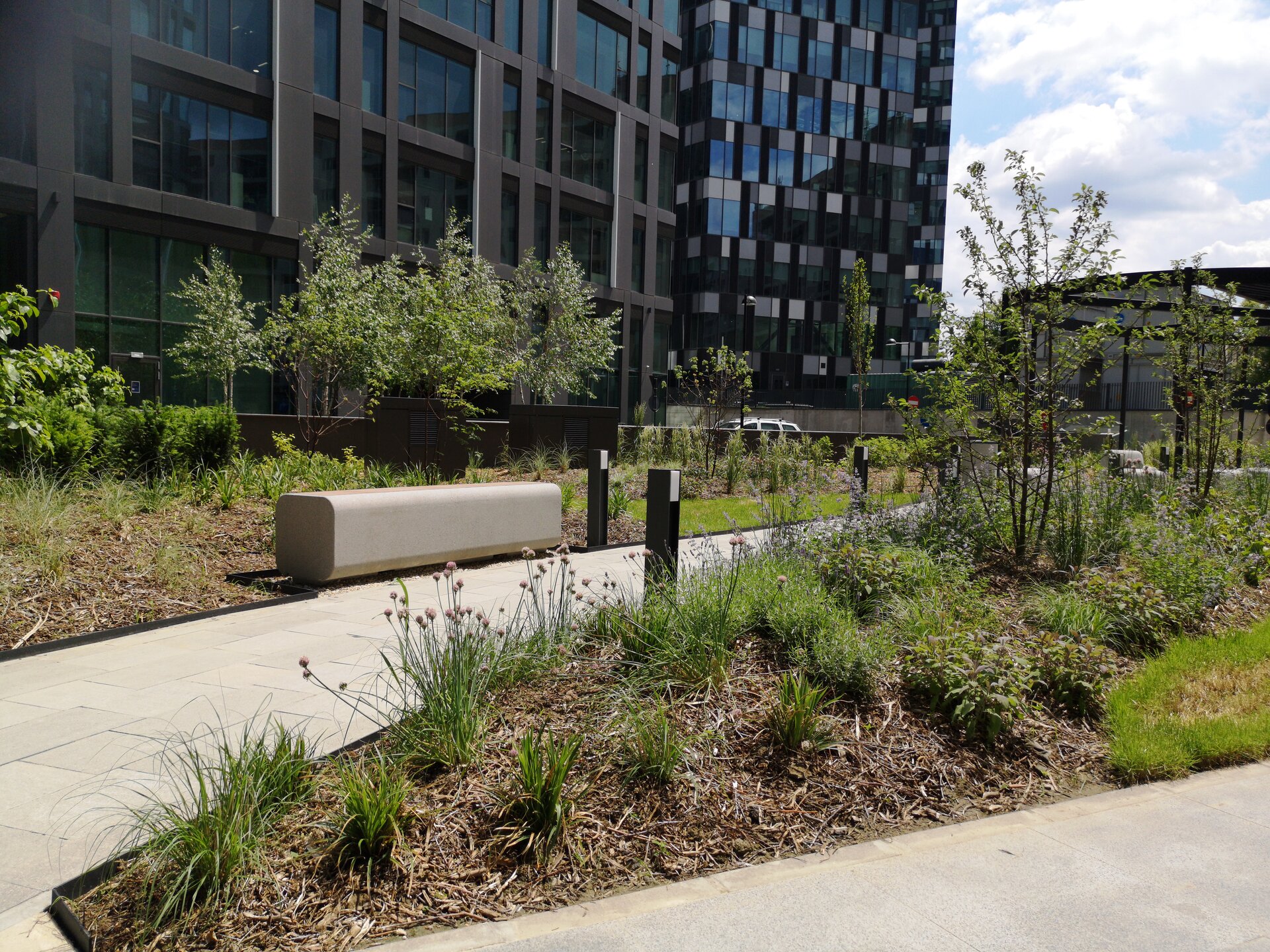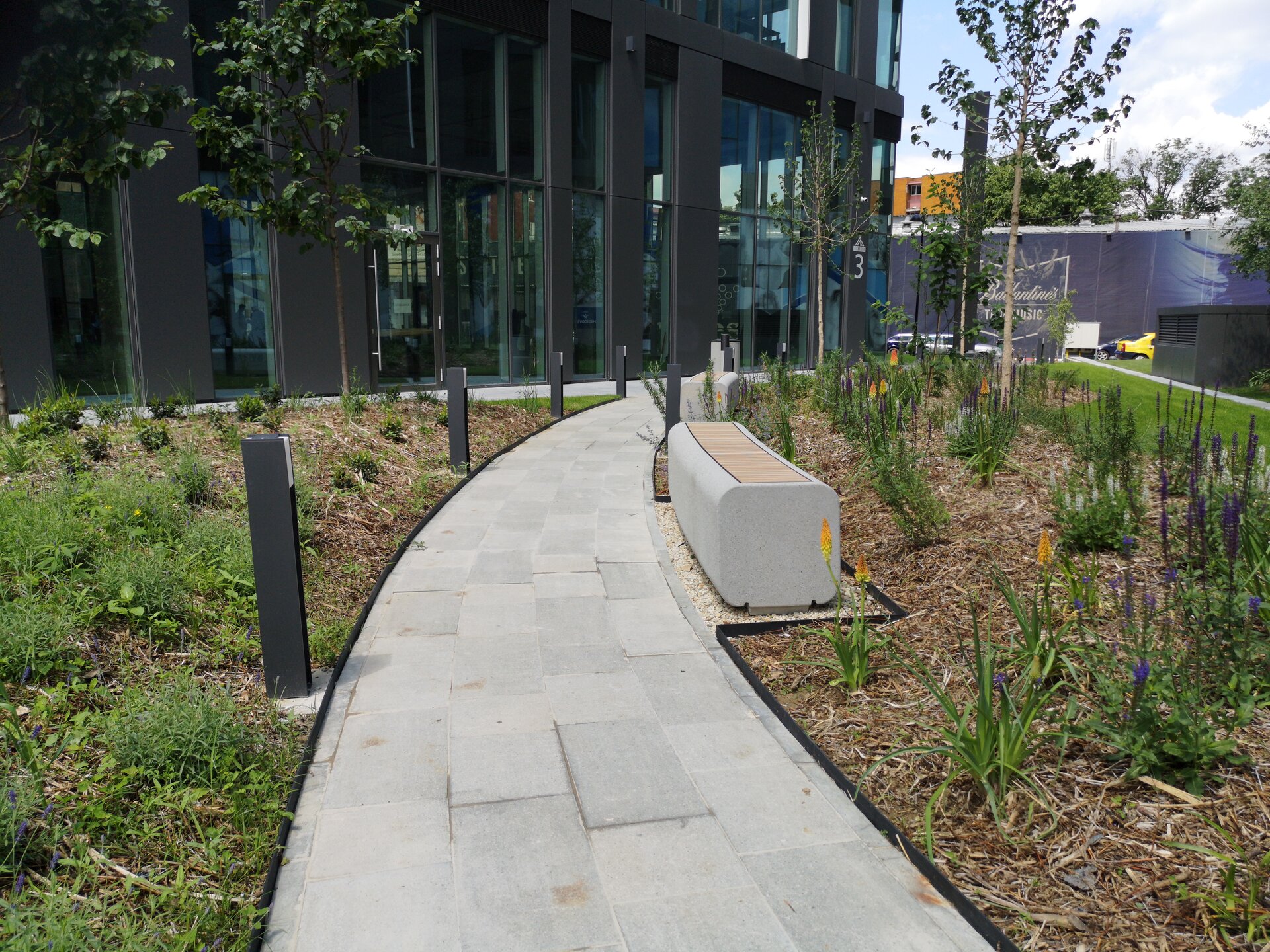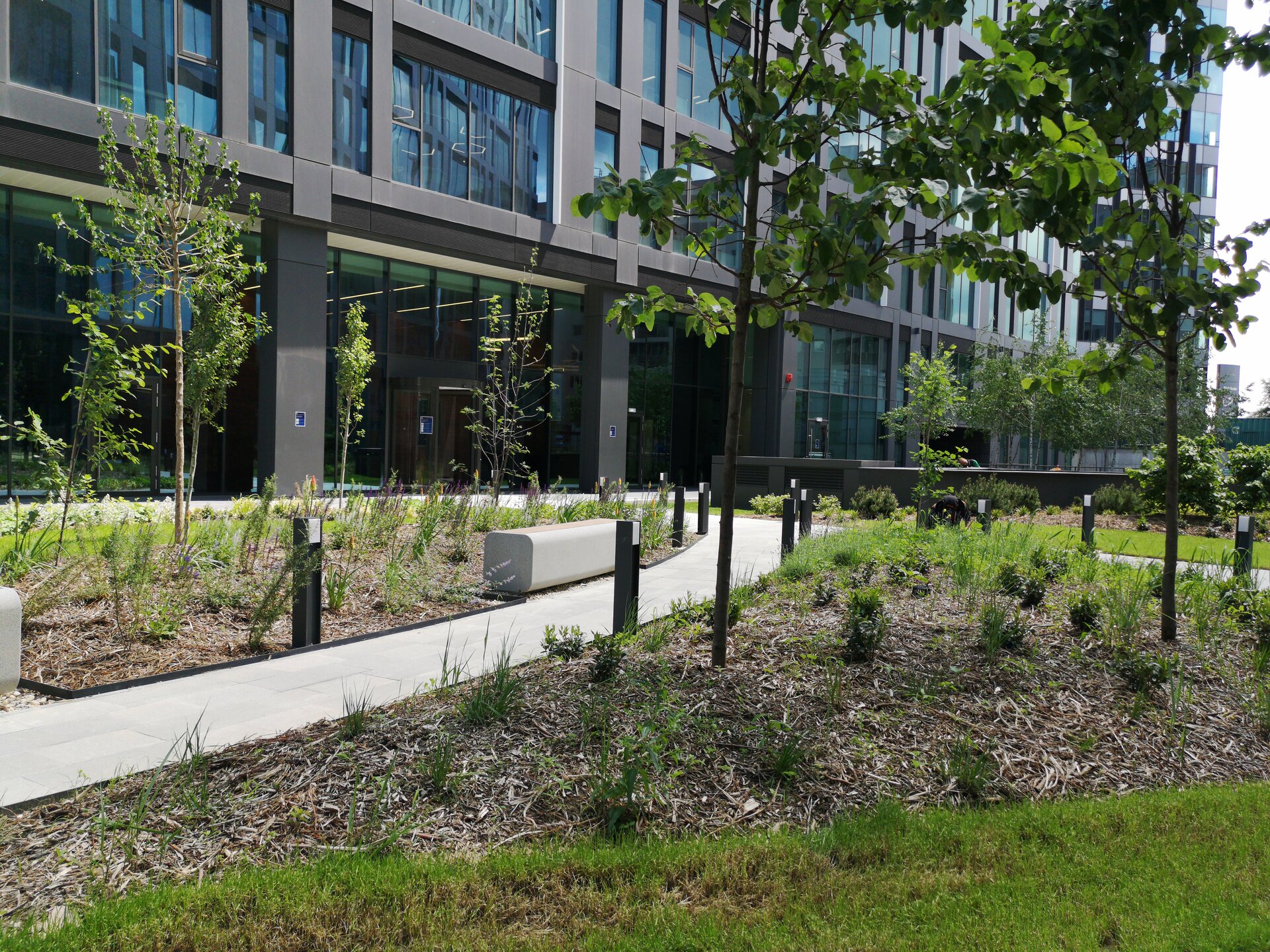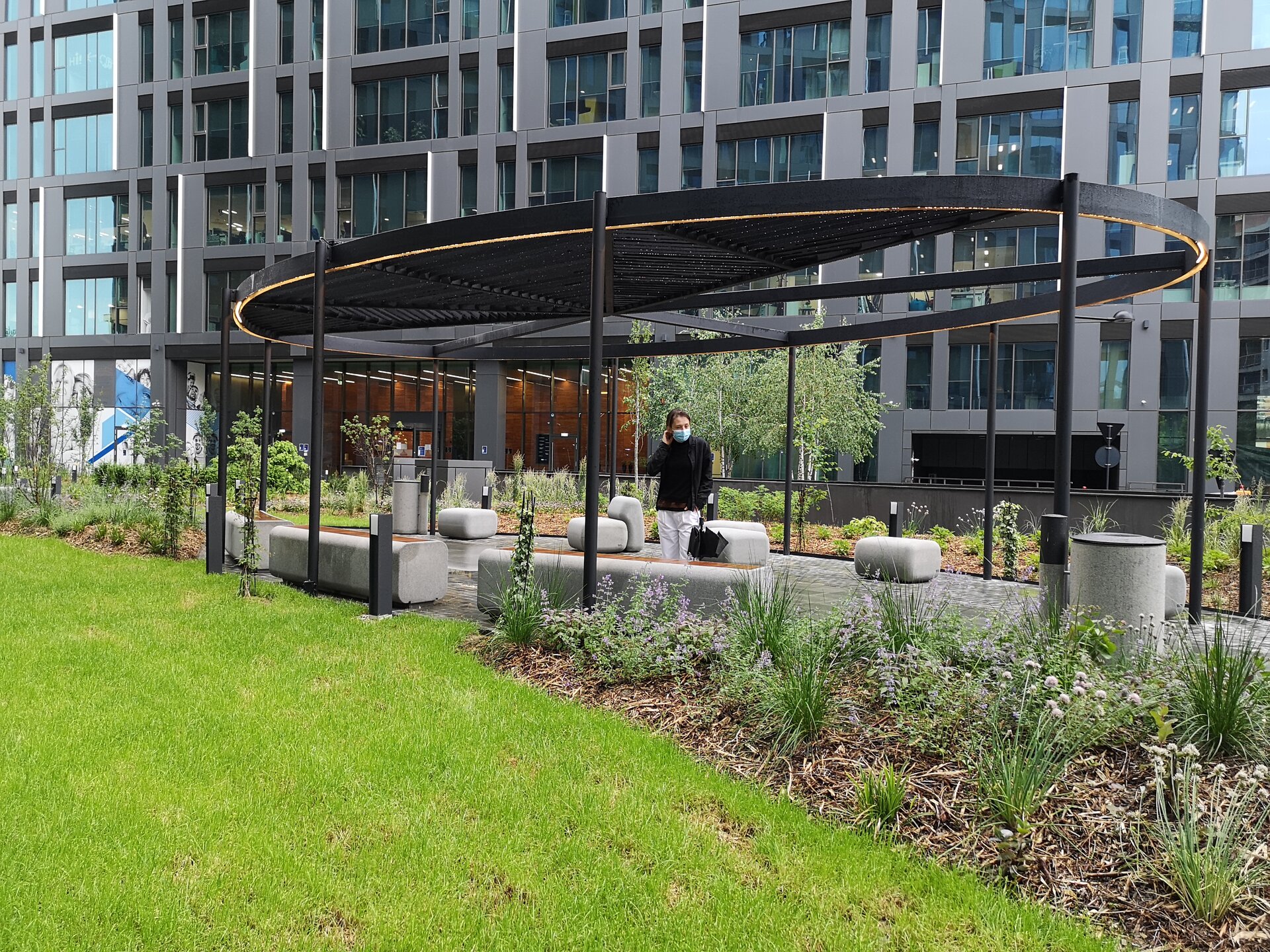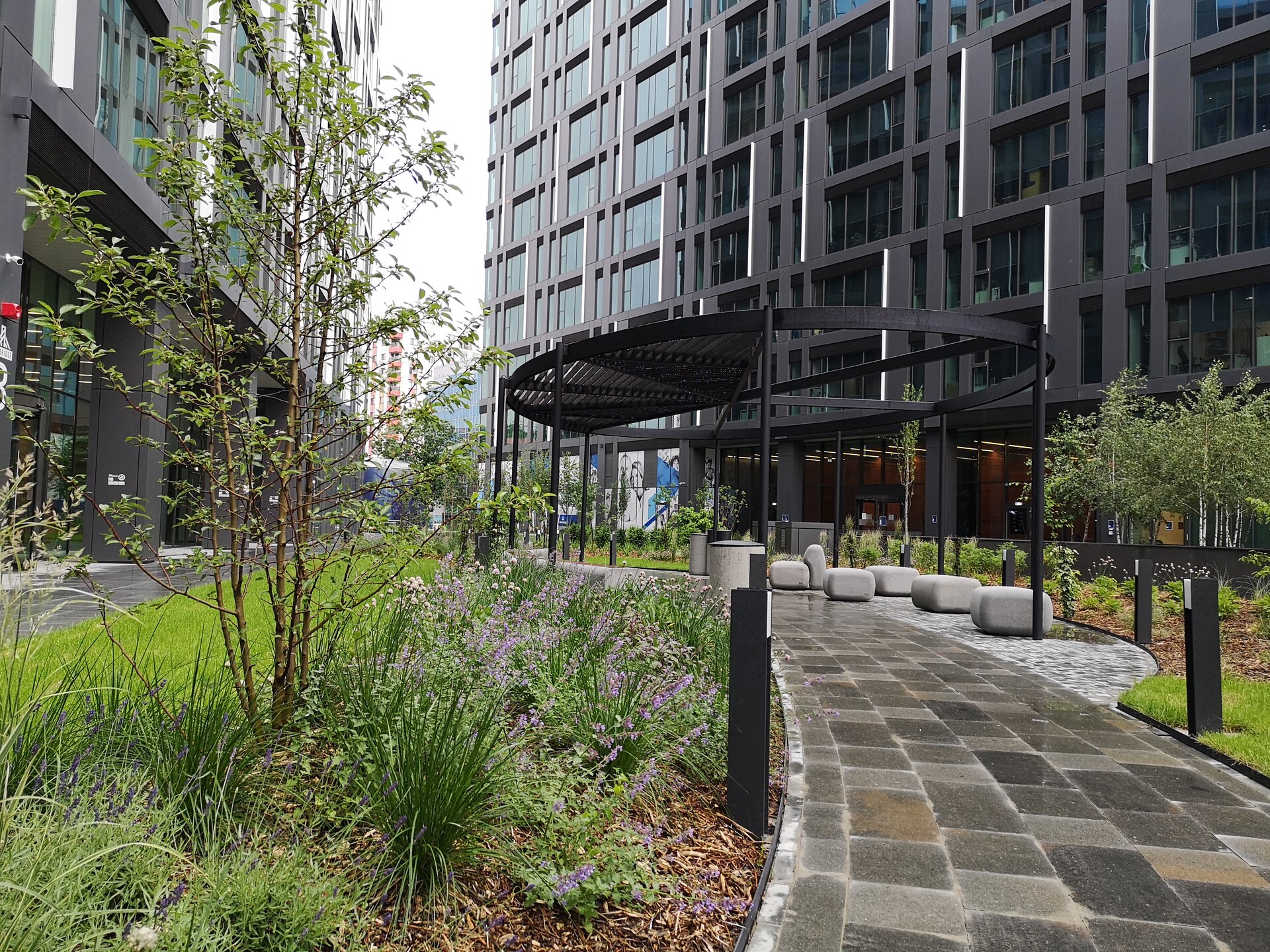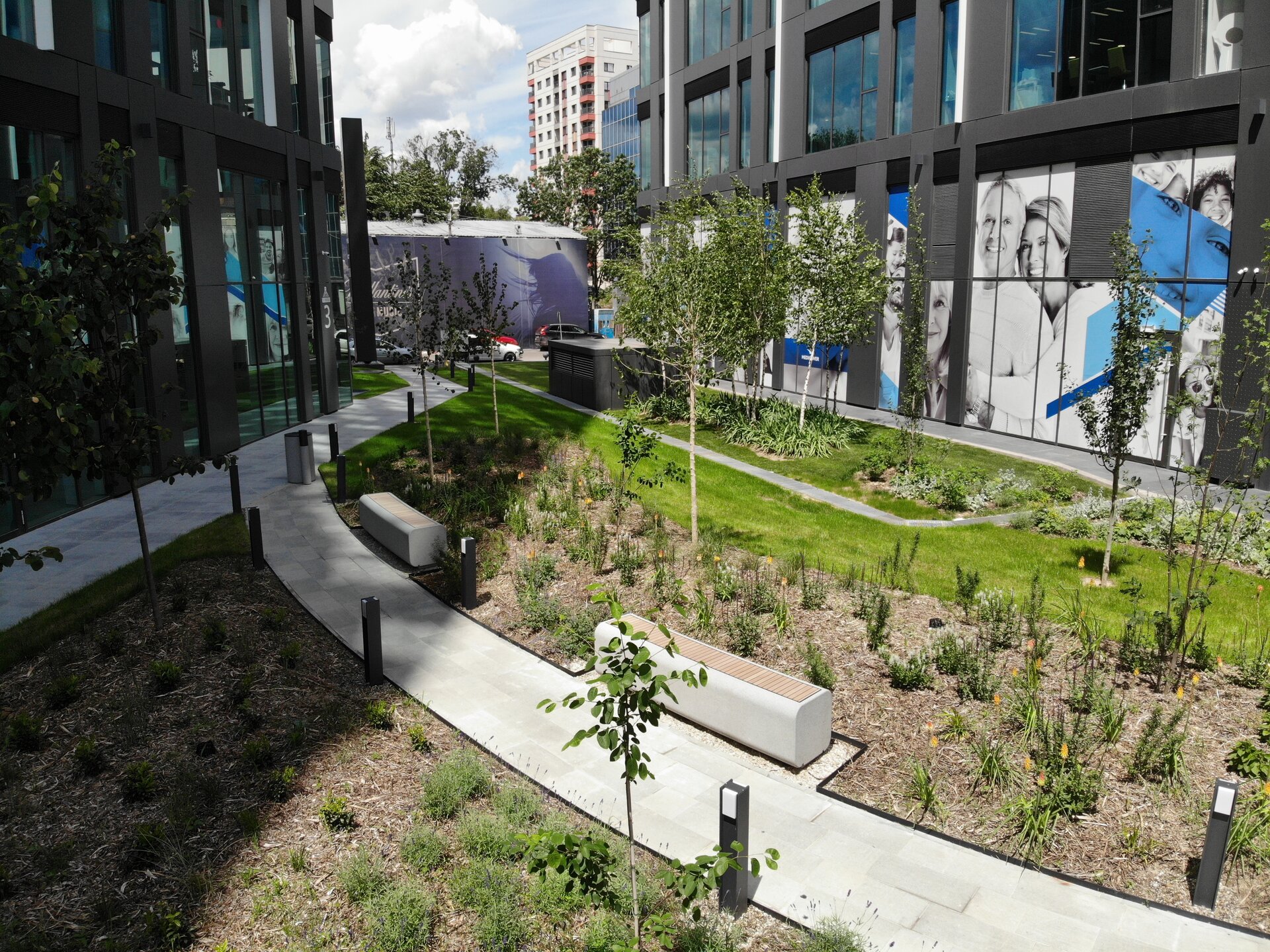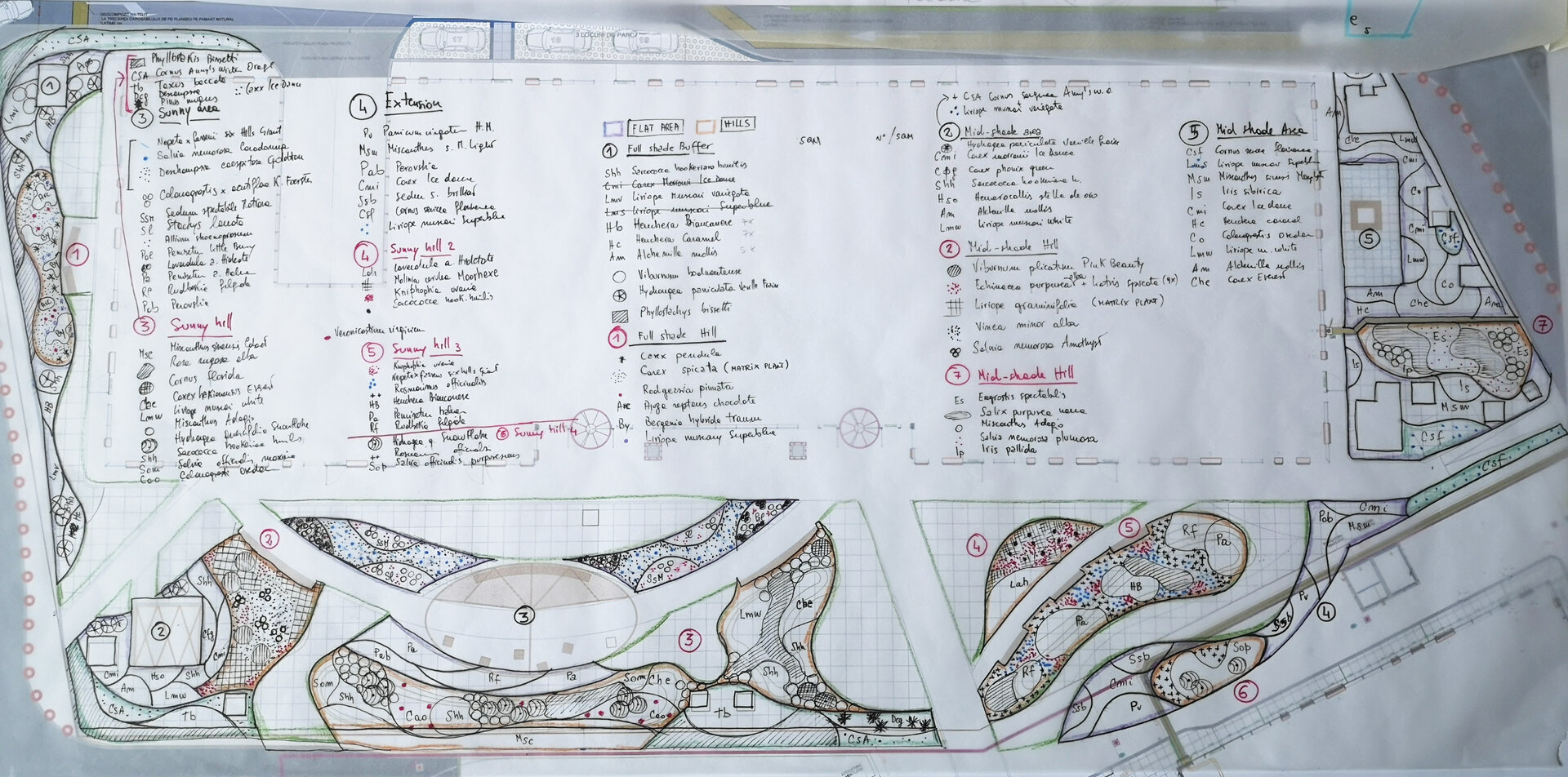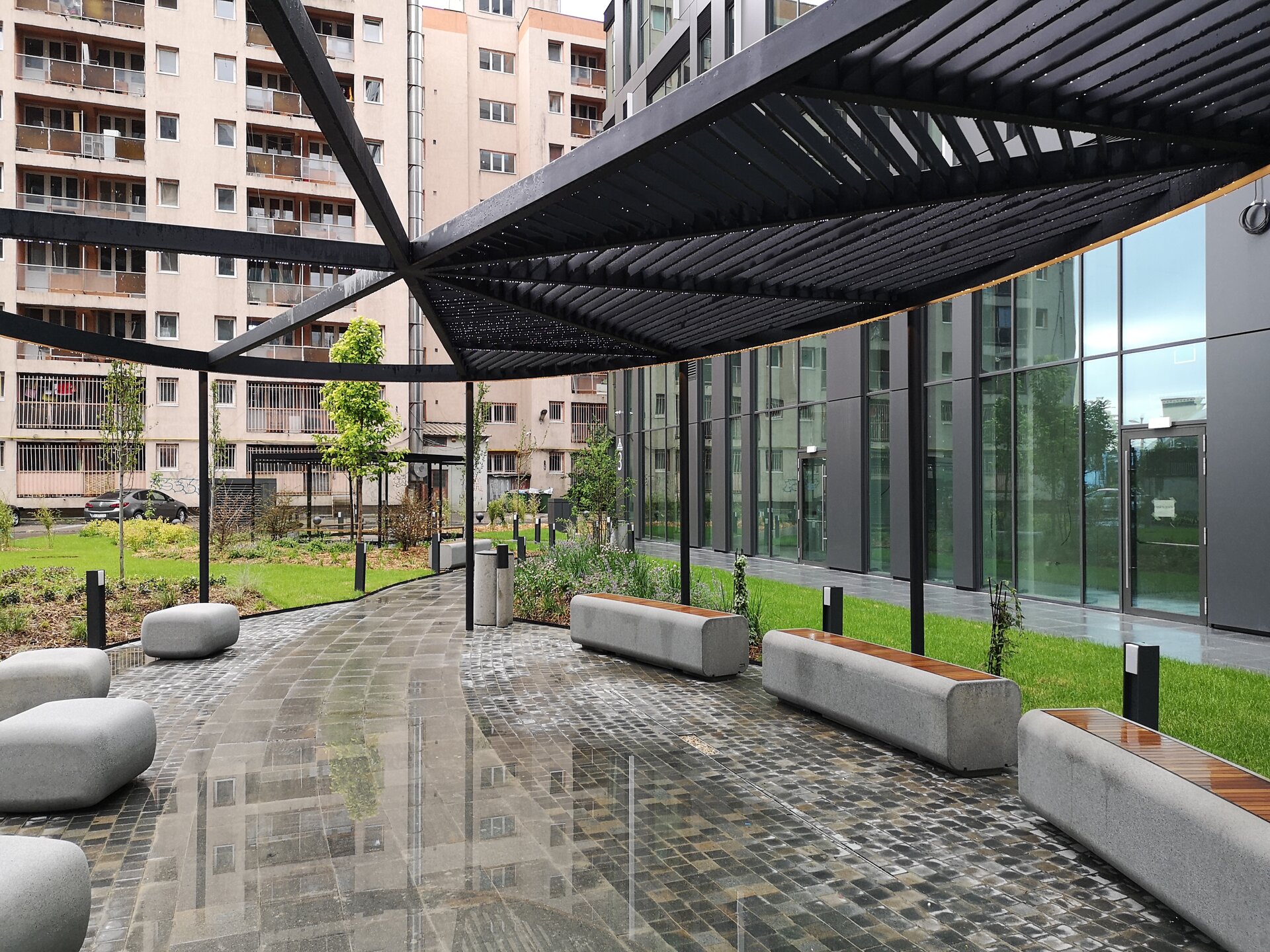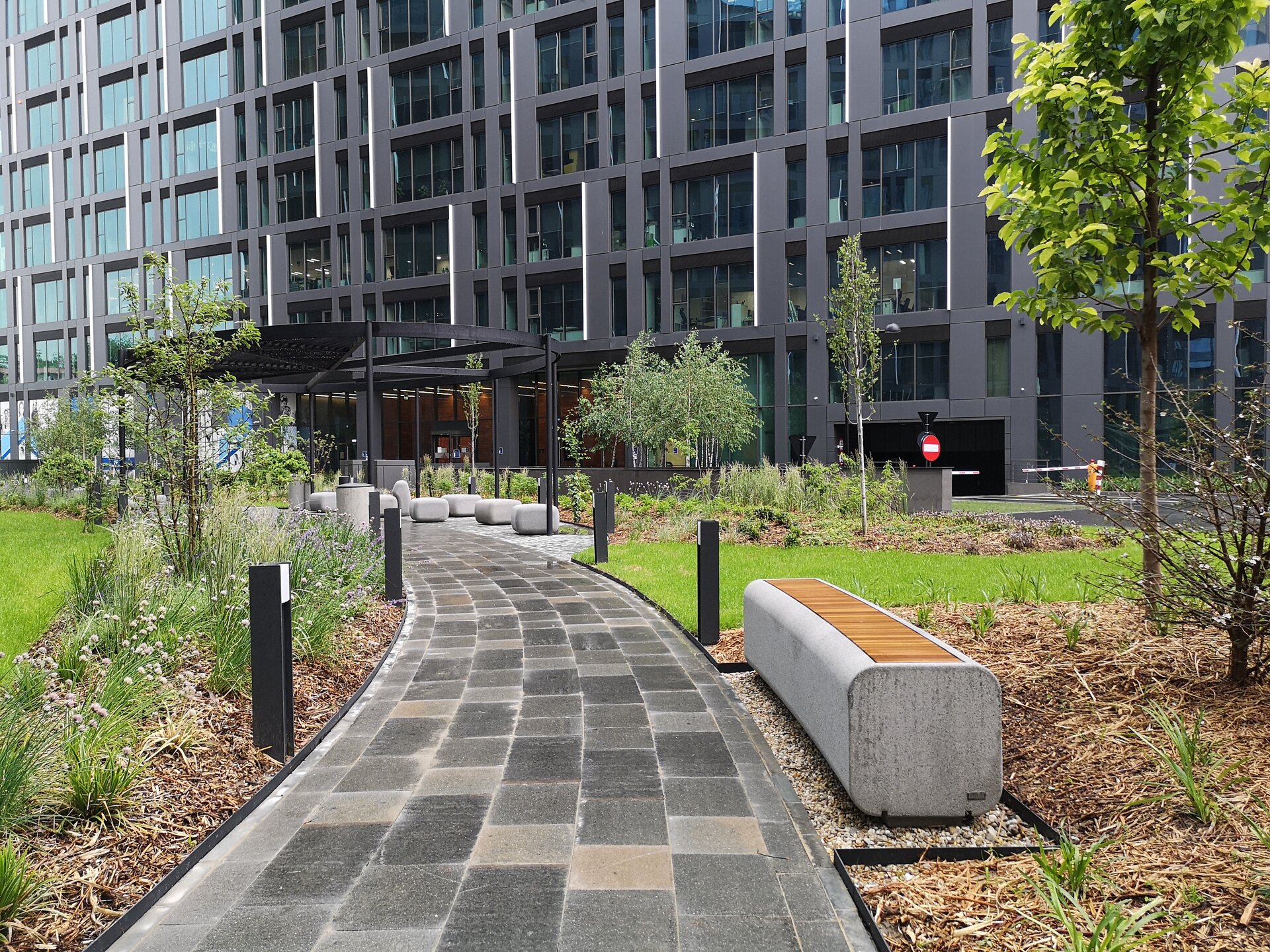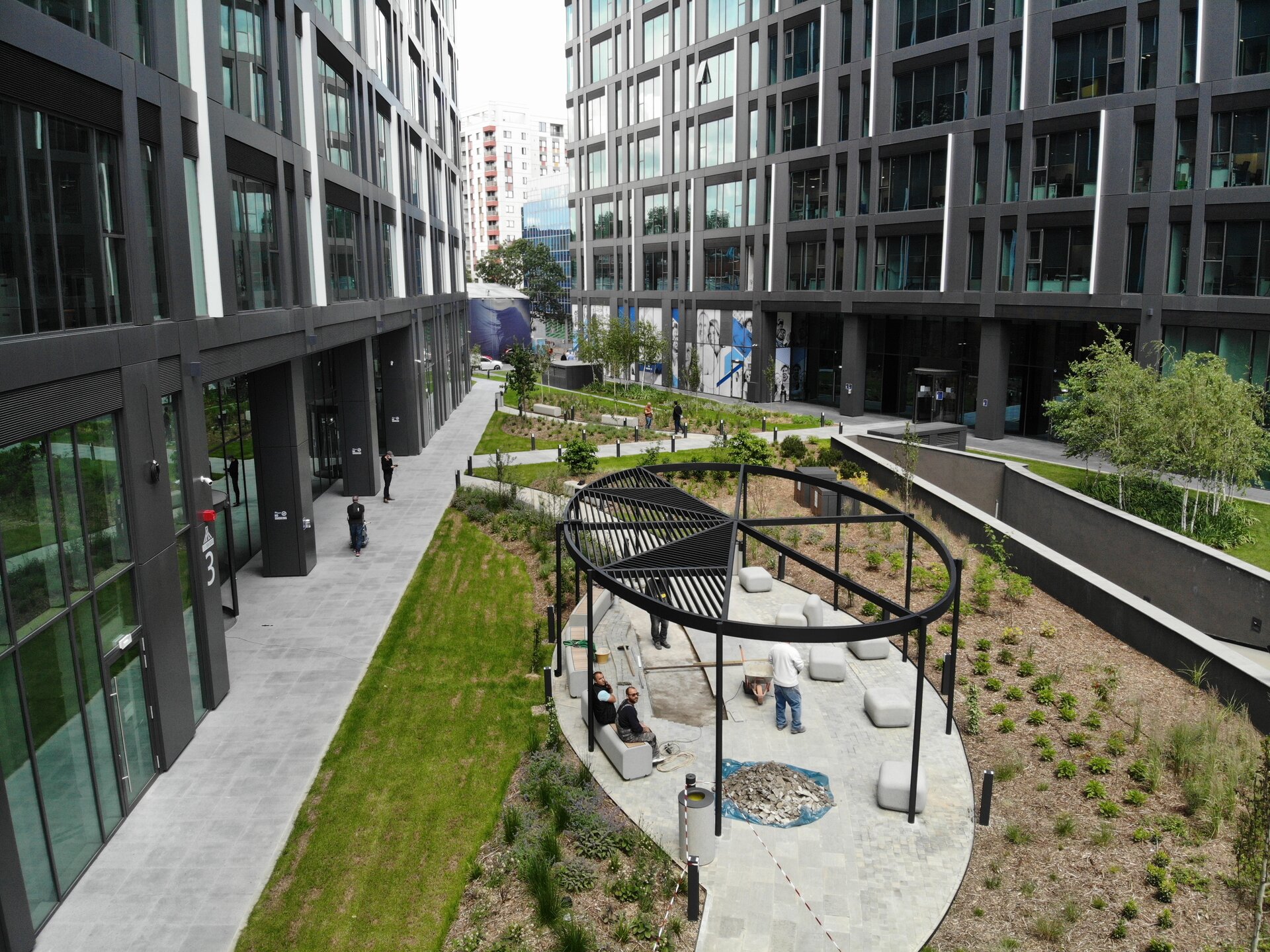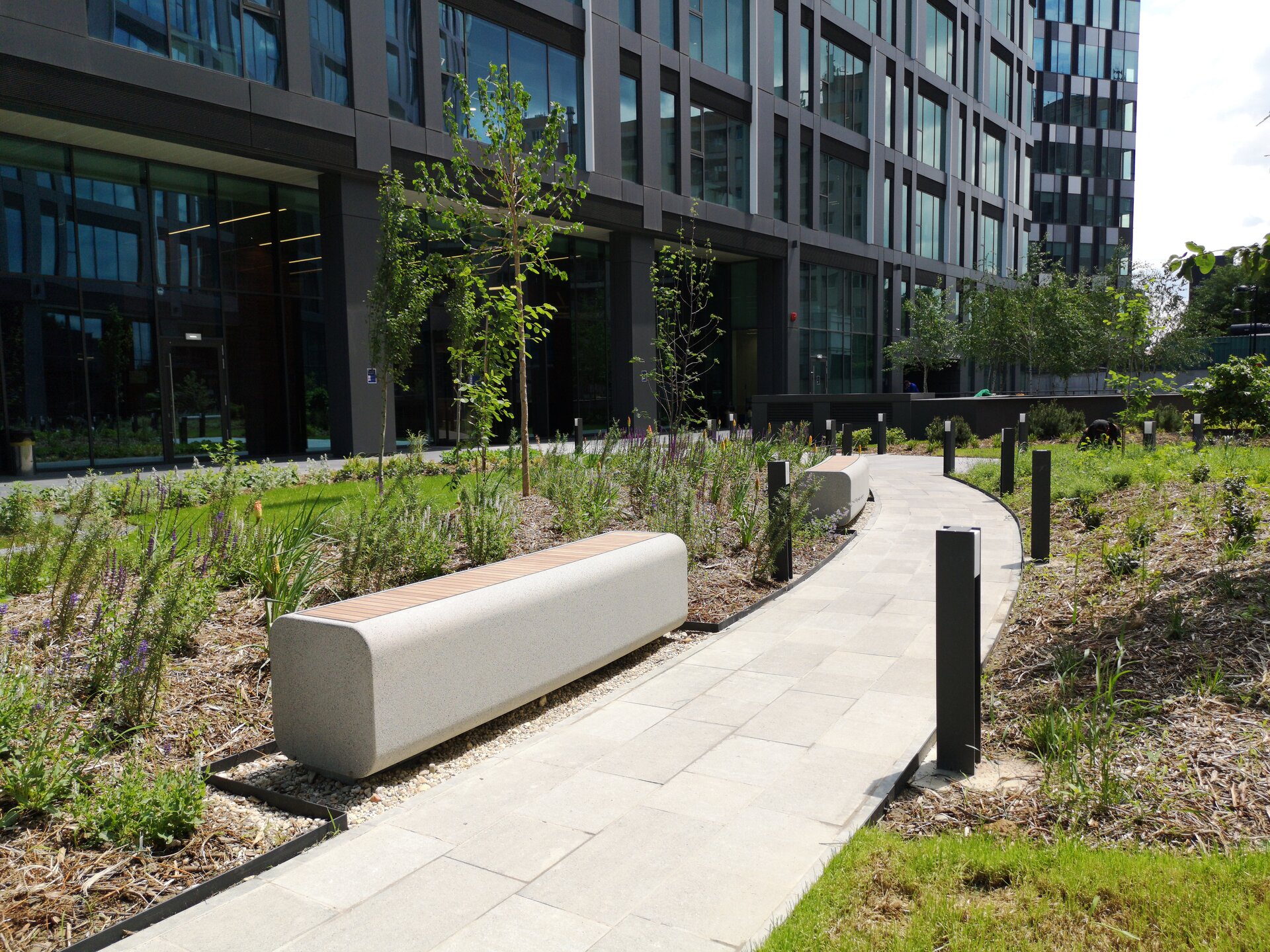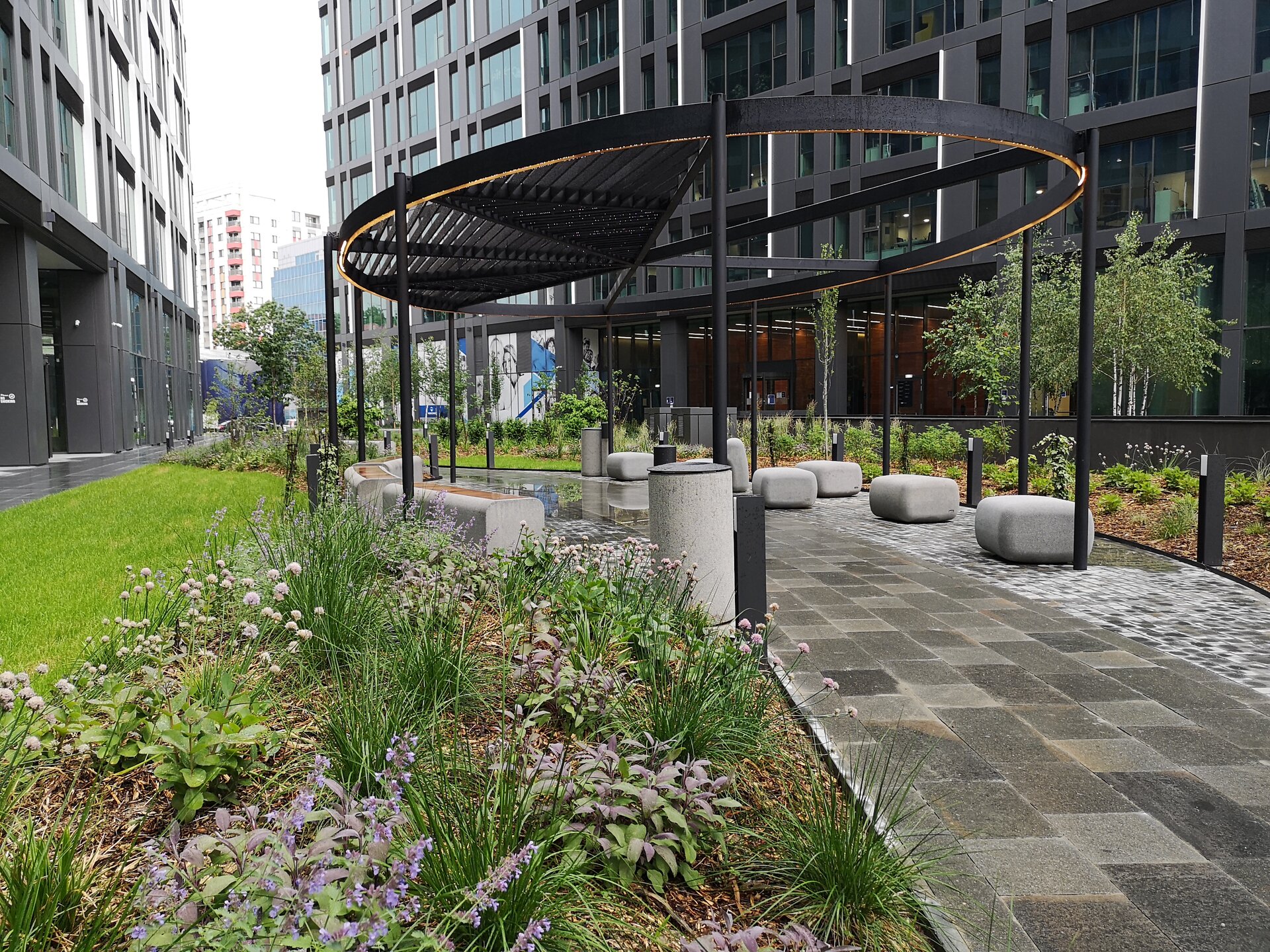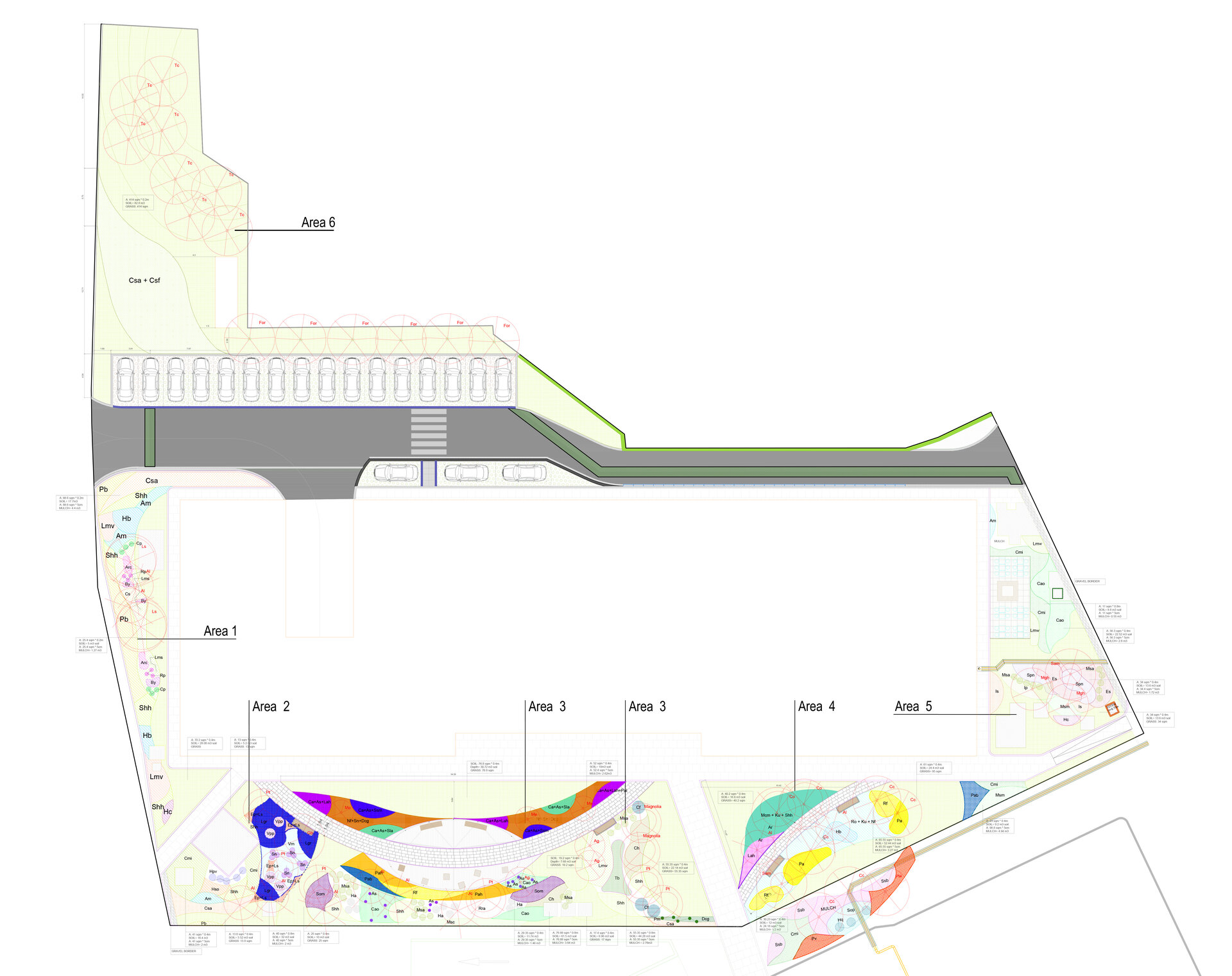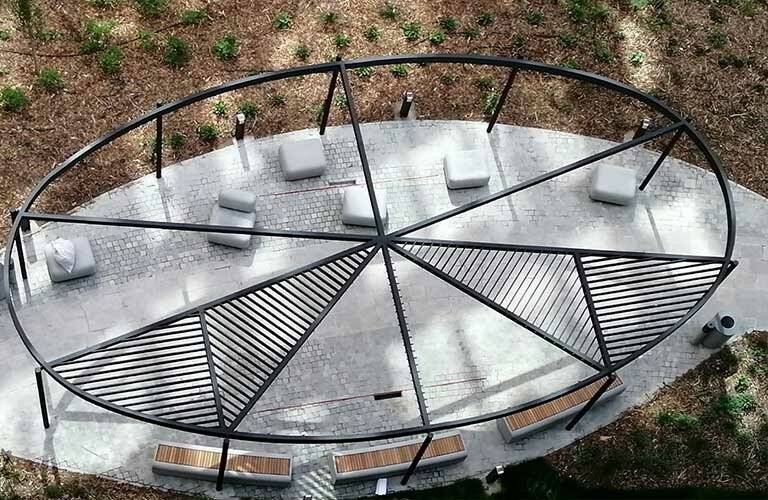
The Bridge 3, Public Realm
Authors’ Comment
The project is a new public green space in between two office buildings development.
It was a project which was firstly designed pre covid times, and then modified and built/planted during the first months of the pandemia, while there was a big feel of uncertainty about what was going on globally.
The initial idea was to offer more to the city than just a transit zone, but to actually look for ways to create a place which could be use not only by the office workers, but also by the neighbor residents.
Being a dense area of the city, with a mix used of student accommodation and office spaces, the open spaces for leisure and recreational activities are kept to the minimum. Therefore, we tried to create a large green area in the middle of the built blocks, working with a dense palette of perennials, ornamental grasses, woody shrubs and trees. We used over 80 different species in the project trying a layering planting system in which each one of the islands represents a small ecosystem in its own, thus reducing the need of maintenance, reseeding, and replanting through the years. The new green areas then have a high ecological value and are more resilient in time than the classic planting schemes used in the city.
One of the main ideas was to create a place for social interaction, and face to face meetings in open air. A large canopy was conceived in the middle of the green areas with different seating arrangements aside of the main movement lines. Small seating pockets were defined next to the secondary paths, looking for more secluded meeting areas, protected by a green buffer planted on its back.
The project, starting from a space between two office buildings, becomes a green hub for social interaction and informal meetings inviting office workers and neighbor users to use the space either in transit or as destination. The landscaping becomes a predominant feature and not add-on to the space, the green areas are protagonist on the public realm development, together with the formal and informal meeting areas, thus looking back to the needs of open public space for social interaction, especially in difficult times when open air social spaces are becoming more important for physical and mental health.
Related projects:
